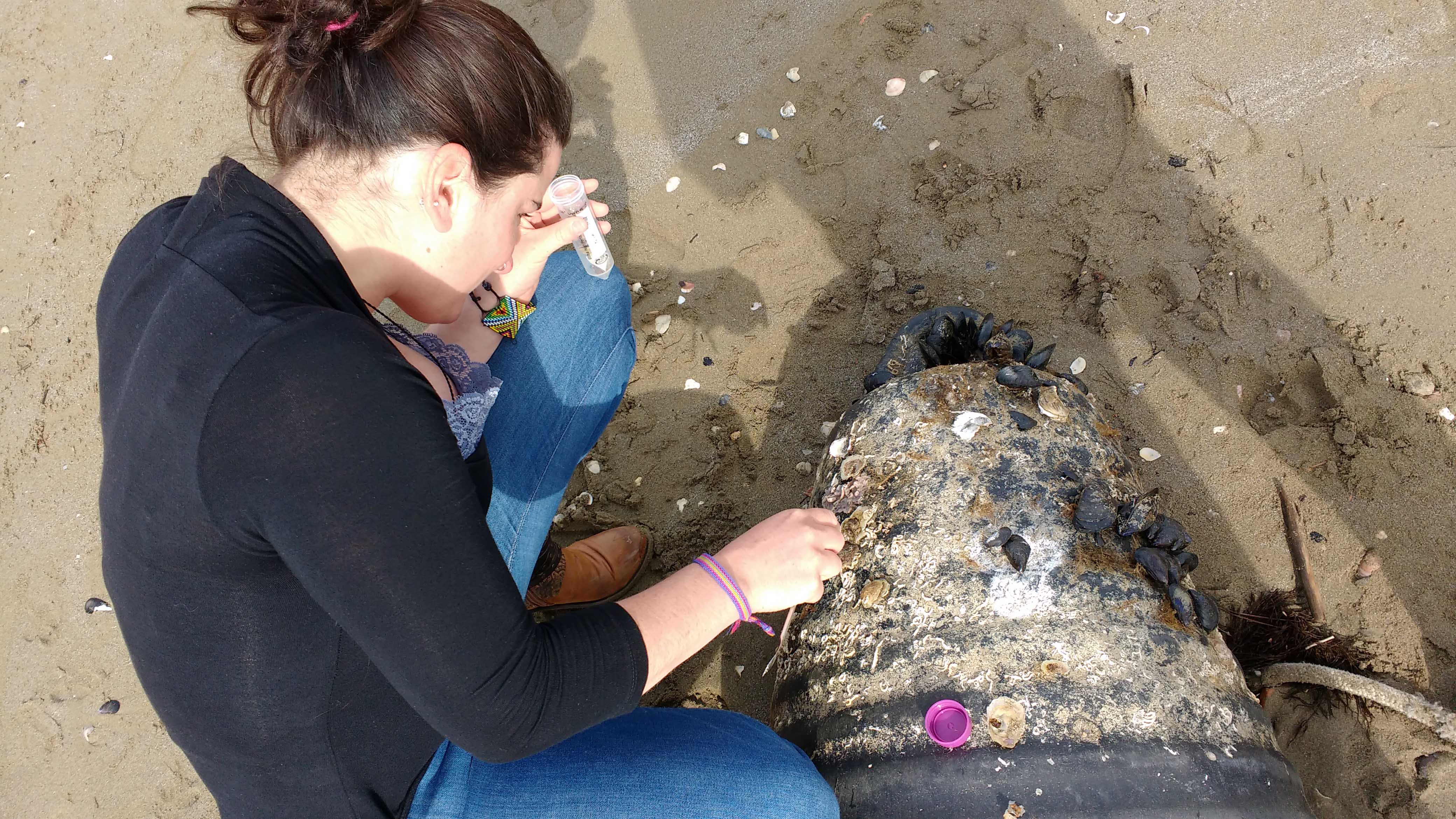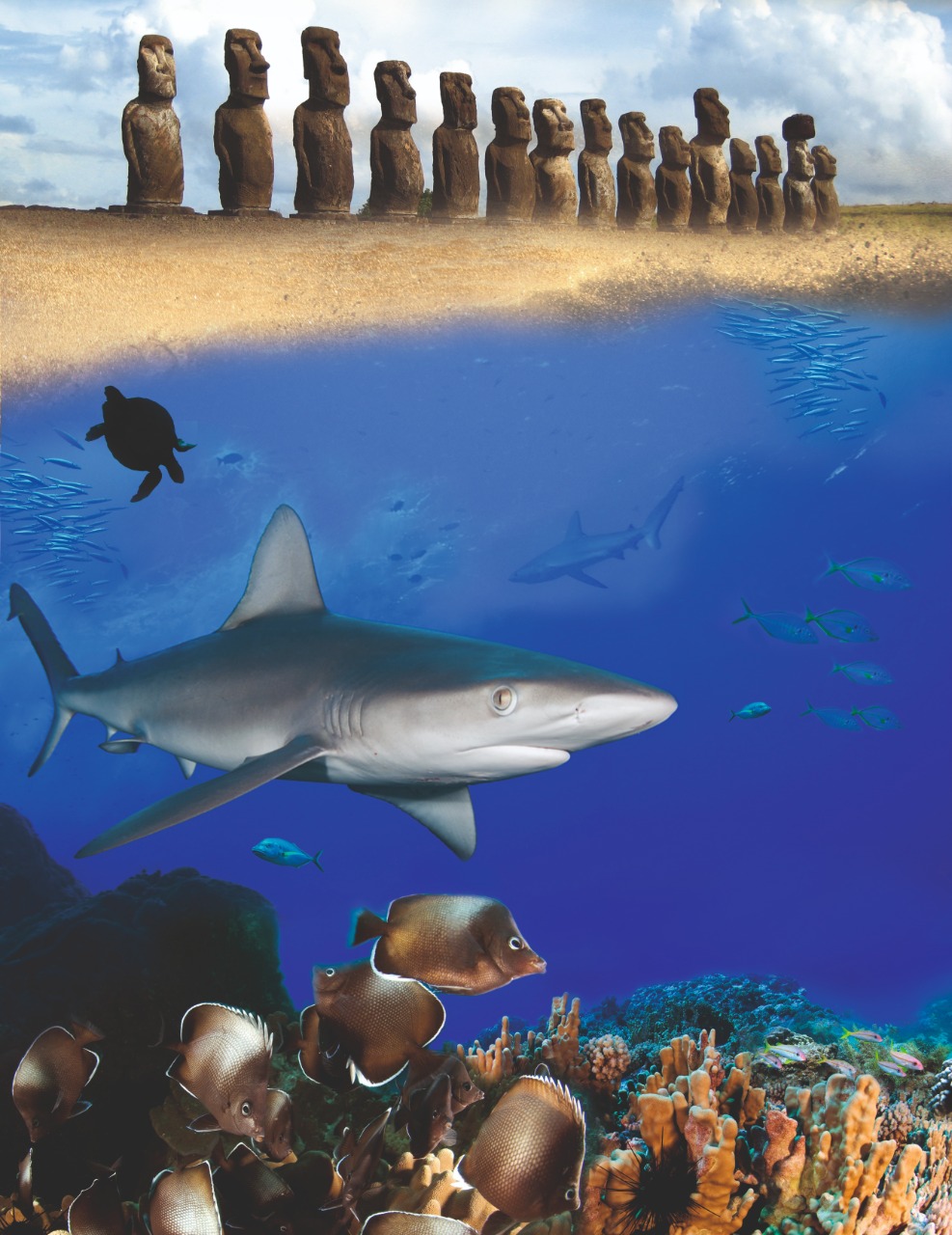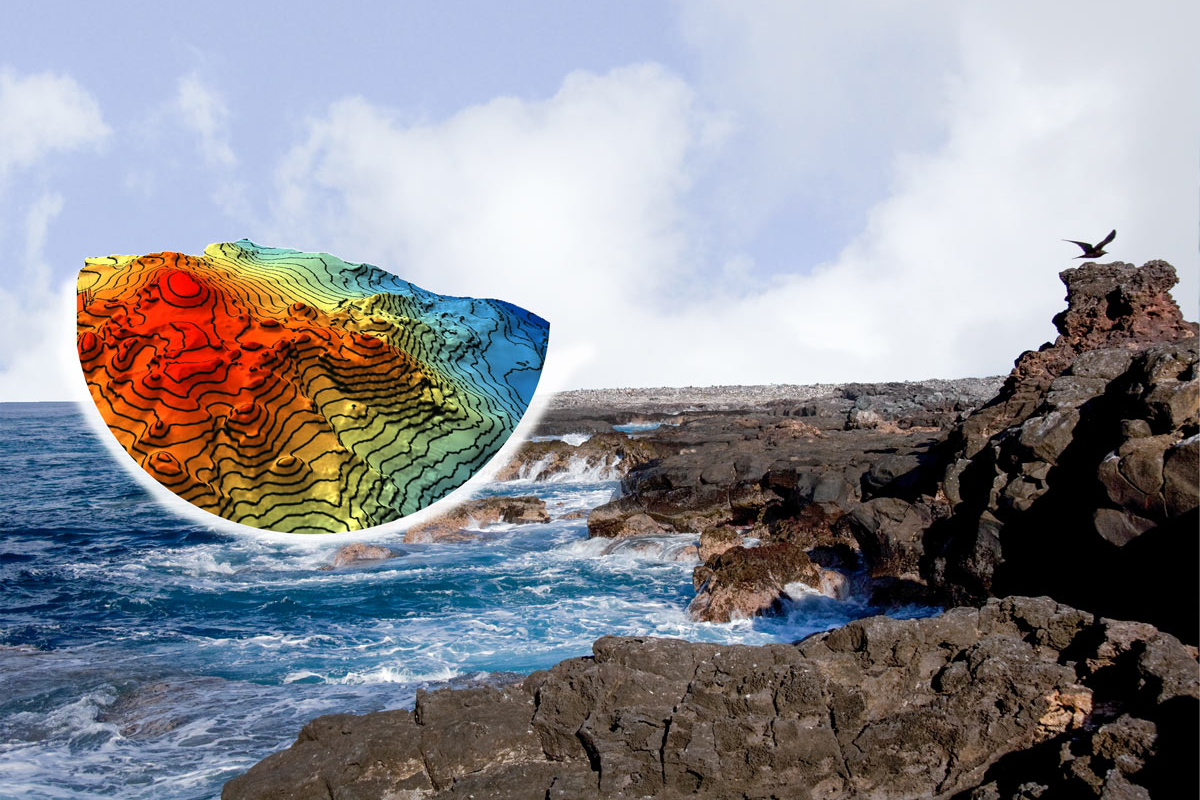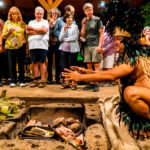A HITCH-HIKERS GUIDE TO RAPA NUI
A HITCH-HIKERS GUIDE TO RAPA NUI
by Sabine Rech – ESMOI
Plastic litter is not inert – many different organisms are growing on it. Some of these organisms may have come from coastal communities thousands of kilometres away. Organisms have already been travelling the ocean on floating stuff (a process that is called “rafting dispersal”) formillions of years. In the past, these travellers arrived on volcanic pumice or on long-living tree trunks. ¿So, why are we concerned about organisms arriving now on plastic litter? The answer is simple: The availability and durability of natural rafts was much more limited. Major rafting events were rather exceptional, occurring after volcanic eruptions or after very big floods on continents. Only the hardiest travellers could survive these very long trips. Nowadays a huge armada of plastic litter is floating in the South Pacific and hundreds of plastic items arrive every day on the coasts of Rapa Nui. And with them undesired stowaways may arrive on the island.

Microplásticos en la playa de Rapa Nui. / Microplastics on Rapa Nui beach.

Tapa de Nescafé encontrada en Anakena con colonias adjuntas de Jellyella. / Botella de plástico ensuciada de la playa de Baz de Vizcaya.

Tapa de Nescafé encontrada en Anakena con colonias adjuntas de Jellyella. / Botella de plástico ensuciada de la playa de Baz de Vizcaya.
A recent massive event has shown the immense scope of plastic rafting: Big man-made structures like floating docks or entire boatshave been stranding on US shores for several years now.They got detached from Japanese coasts during the 2011 tsunami. When scientists examined the stranded objects, they made a surprising discovery: The much-travelled rafts harboured a richand thriving community of nearly 300 attached species. To the researcher’s astonishment, they had not only made the transoceanic journey alive, buteven reproduced along the way.While clearly a success story for the travelling biota, their arrival poses a serious threat to their new habitat.Newly arriving species may become invasive and thereby harmlocal biodiversity. “Plastic marine debris … is probably one of the great emerging channels for marine invasions” warns Professor James Carlton of the William College in Massachusetts, who studies the Tsunami debris. He emphasizes the importance of continuously monitoring for the arrival of potential invaders, especially in or near harbours. Although the phenomenon has gained increasing attention in the last years, important questions remained unanswered.

Acumulación de objetos de plástico (en su mayoría incrustados por Jellyella) en la playa de Rapa Nui. / Accumulation
of plastic objects (mostly encrusted by Jellyella) on Rapa Nui beach.

Sabine Rech tomando muestras de una boya varada en una playa mediterránea. / Sabine Rech taking samples from a
stranded buoy on a Mediterranean beach.

Ostras de Magallana invasoras atadas a una suela de zapato en el Golfo de Vizcaya. / Invasive oyster Magallana gigas attached to a
shoe sole in the Bay of Biscay.
How important is plastic rafting on a global scale? And: How does it affect remote islands like Rapa Nui?
The big question is: Do such plastic rafts really transport non-native biota to remote Rapa Nui? The island is located in the central region of the South Pacific Subtropical Gyre and large amounts of plastic fragments from this current system wash up on its beaches. But, are these fragments actually colonized by rafting organisms?

Colonization by invading species becomes more and more likely as the number of plastic objects produced and thrown away increases continuously. At the same time, oceanic conditions are changing due to climate change. This allows invasive species to colonize previously unsuitable habitats. The danger of invasive species rafting on plastics will thereforeprobably increase in the future. A drastic reduction of plastic production and use is needed to protect Rapa Nui and the marine environment in general.

Vista ampliada del patinador de mar Halobates sp. (etapa juvenil) y percebes encontrados en artículos de plástico en las playas de Rapa Nui. / Magnified view of the sea skater Halobates sp. (juvenile stage) and barnacles found on plastic items on Rapa Nui beaches.

Jim Carlton haciendo bioincrustación en una boya
Woods Hole. / Jim Carlton biofouling on a buoy Woods Hole.
Featured Reports:
Bees Rapa Nui
Bees Rapa NuiFree of Pathogens, a Source of Life and LoveBees were introduced to Easter Island by the Catholic missionaries of the Sacred Heart of Jesus in the decade of the 1860s, and since then have been pollinating guavas, mangoes, bananas and pasture flowers. In...
El Tavake and its future
The Tavake And its future, a challenge for Rapa NuiOne of the loveliest spots on the Island is the Moai (statue) quarry at Rano Raraku. Anyone who has visited it has seen or heard the Tavakes, the red-tailed tropicbird. These majestic white birds, with their bright...
Marine Reserve in the bay of hanga roa
Marine Reserve in the bay of hanga roaAccording to the experts and the international NGOs that are dedicated to marine conservation, the oceans should be managed as ecosystems and not as a cornucopia that the fishing industry can harvest at will. In the entire world,...














